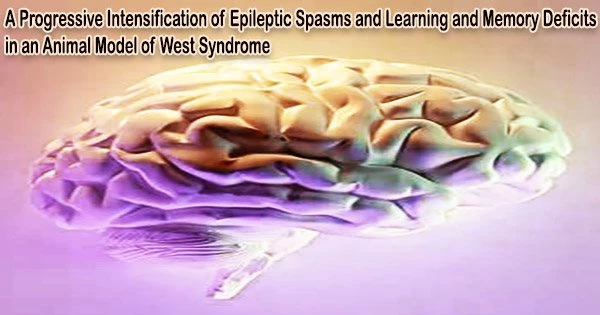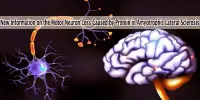West syndrome, also known as infantile spasms, is a rare and severe form of epilepsy that typically begins in the first year of life. A specific type of seizure called a spasm, which is a sudden, brief contraction of the muscles, characterizes it.
The most common kind of syndromic epileptic encephalopathy to impact infants, West syndrome, is a terrible and frequently fatal illness. A triad of symptoms seizures/spasms, a signature brain activity between seizure events, and intellectual disabilities characterize it.
Researchers in the laboratory of Dr. John Swann, professor at Baylor College of Medicine and investigator at the Jan and Dan Duncan Neurological Research Institute at Texas Children’s Hospital, have provided the first demonstration of a progressive increase in epileptic spasms along with learning and memory deficits in an animal model of this disorder.
It also establishes this as a ‘ideal’ model for figuring out the underlying molecular pathways and developing targeted treatments for this illness, according to the research published in Epilepsia.
IS animals have a progressive increase in seizure duration
In 2008, members of Dr. Swann’s lab and their collaborators infused tetrodotoxin (TTX) a sodium channel blocker into the neocortex of rats to model human infantile spasms (IS). Since then, this method has been used extensively to study this condition.
We found a significant reduction in learning and memory skills in all three tests in these animals. These findings point towards a likely association between seizure progression and cognitive decline in this model of epileptic spasms and underscore the critical importance of early diagnosis and intervention in IS infants.
Professor Dr. John Swann
The Swann lab conducted continuous long-term electroencephalogram (EEG) recordings of these rats’ brains for approximately two months in order to assess how seizure activity develops in the IS rodent model.
“Although these studies were labor-intensive and time-consuming, they gave us unexpected critical insights into how epileptic spasms evolve over time,” Dr. Swann said. “We noticed that the duration of the seizure events increased over this time course and then plateaued. However, unlike other epileptic syndromes (e.g., temporal lobe epilepsy), the frequency of the spasms did not change.”
IS animals exhibit learning and memory deficits
Children with seizure disorders frequently experience cognitive and behavioral difficulties. Intellectual difficulties and developmental delays are severe in syndromic epileptic encephalopathies.
Only 16% of patients with West syndrome had normal intellectual development, according to an analysis of 67 research. However, the cause behind this cognitive decline has remained a mystery.
The cognitive decline in IS patients has been linked to a number of variables during the past few decades, including abnormalities of the brain, trauma, infections, and genetic alterations.
However, the bulk of these patients share recurrent seizures as one of their most prevalent causes. In fact, following seizures, parents of these infants frequently report regressive or stagnant intellectual and behavioral skills.
The prevailing agreement among experts is that these patients’ cognitive impairment may be primarily caused by their frequent seizures/spasms and the distinctive disruptive brain activity (known as hypsarrhythmia) that persists in between seizure events.
To test this hypothesis, the Swann team performed several learning and memory tests such as object recognition, object location, and Matching to Place Water Maze test (which measures working memory i.e., the cognitive skill that allows a person to leverage newly acquired skill or knowledge to solve a problem) on the same animals that had undergone continuous video recordings.
“We found a significant reduction in learning and memory skills in all three tests in these animals,” Swann said. “These findings point towards a likely association between seizure progression and cognitive decline in this model of epileptic spasms and underscore the critical importance of early diagnosis and intervention in IS infants.”
Others involved in the study were John T. Le, Carlos Ballester-Rosado, and James D. Frost. They are affiliated with the Cain Foundations Laboratories, Jan and Dan Duncan Neurological Research Institute at Texas Children’s Hospital, and Baylor College of Medicine.
The Infantile Spasms Initiative of CURE Epilepsy, the National Institutes of Health, and the National Institutes of Health’s Intellectual Developmental Disabilities Research Centers provided grants for this study.
















